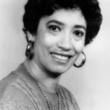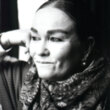Virgie goes to school with us boys
(Book)
JP HOWAR
1 available
Copies
| Location | Call Number | Status |
|---|---|---|
| Westover - Kids Picture Books | JP HOWAR | Available |
Description
More Details
Notes
Similar Titles From NoveList
Similar Authors From NoveList
Published Reviews
Booklist Review
Ages 5^-7. A much-loved and often-told family story does not always translate into a compelling and engaging picture book, but this one sure does. Virgie, youngest in a family of boys, wants to learn to read and write just like her brothers. But the boys have to walk seven miles to Jonesborough each Monday morning, carrying their food and clothes, and stay the week at the Quaker school. Virgie is insistent, and the wonderful rhythms of the telling take us past the mill, the stream, the woods where the children sing to drive away the fear, and, finally, to school, where Virgie vows to read every book. Lewis, who illustrated Bat Boy and the Violin (1998), beautifully uses the play of light and dark, letting the greens of forest and meadow, the rich brown skin tones of the characters, and the pale cottons of britches and dresses make a sparkling series of images on the full-page illustrations. An author's note tells some of the family and social history on which the story is based. Children will respond to the wonderful pictures and the implicit and moving message about the value of learning. --GraceAnne A. DeCandido
Publisher's Weekly Review
Based on a true story set during Reconstruction, an African-American girl is determined to get an education just like her brothers, despite the protests of her family. In a starred review, PW called Virgie "a radiant heroine." Ages 5-8. (Jan.) (c) Copyright PWxyz, LLC. All rights reserved
School Library Journal Review
Gr 1-4-The youngest and the only girl in a family with five boys, Virgie works hard to convince everyone she is old enough, strong enough, and smart enough to attend the school set up by the Quakers for recently freed blacks in Jonesborough, TN. By the end of summer, she has convinced her family that she can make the seven-mile walk to board at school each week and willingly handle the job of "learning to be free." The story is a superb tribute to the author's great aunt, the inspiration for this book. Howard crystallizes each of the family members, setting the protagonist snugly in the midst of annoying but loving brothers and wise parents. A note provides more information about the school and family. Lewis's watercolor illustrations capture the characters with warmth and dignity; the many double-page spreads evoke the vastness of both the land and the immensity of Virgie's undertaking. There is a blush of dialect and two thrilling references to Raw Head and Bloody Bones waiting in the woods to catch the children on their way to school. Youngsters will enjoy Virgie but it will be years before they can harvest all that is planted in this gentle tale. A worthy choice for read-alouds and independent reading.-Jody McCoy, The Bush School, Seattle, WA (c) Copyright 2010. Library Journals LLC, a wholly owned subsidiary of Media Source, Inc. No redistribution permitted.
Horn Book Review
Virgie wants to go to school with her brothers, but they reply that it's too far, too hard, and she's too little. Virgie asks her parents and, finally, her persistence pays off--she packs her pail for the week-long stay at the Quaker school for freed slaves. Lewis's watercolor illustrations enhance this addition to the author's collection of family stories. From HORN BOOK Fall 2000, (c) Copyright 2010. The Horn Book, Inc., a wholly owned subsidiary of Media Source, Inc. No redistribution permitted.
Booklist Reviews
/*Starred Review*/ Ages 5^-7. A much-loved and often-told family story does not always translate into a compelling and engaging picture book, but this one sure does. Virgie, youngest in a family of boys, wants to learn to read and write just like her brothers. But the boys have to walk seven miles to Jonesborough each Monday morning, carrying their food and clothes, and stay the week at the Quaker school. Virgie is insistent, and the wonderful rhythms of the telling take us past the mill, the stream, the woods where the children sing to drive away the fear, and, finally, to school, where Virgie vows to read every book. Lewis, who illustrated Bat Boy and the Violin (1998), beautifully uses the play of light and dark, letting the greens of forest and meadow, the rich brown skin tones of the characters, and the pale cottons of britches and dresses make a sparkling series of images on the full-page illustrations. An author's note tells some of the family and social history on which the story is based. Children will respond to the wonderful pictures and the implicit and moving message about the value of learning. ((Reviewed November 1, 1999)) Copyright 2000 Booklist Reviews
Publishers Weekly Reviews
Howard (Chita's Christmas Tree) plucks fruit from her family tree for this stellar story of an African-American girl determined to get an education just like her brothers. Narrated by the young C.C. (Howard's grandfather), the tale is set during Reconstruction, when schools sprang up all over the South to help educate the children of freed slaves, and it is based on the particular school attended by the real-life C.C. and his siblings in Jonesborough, Tenn. Virgie, the youngest of the siblings and the only girl, is determined to attend the school, despite the protests of her family ("You scarcely big as a field mouse. And school's seven miles from here!"). Finally, her parents acquiesce, sending her off with her five brothers with a week's worth of food and clothing in a bucket. Undeterred by a slip in the creek and a scary trek through the woods ("Didn't I tell you about Raw Head and Bloody Bones? Get you if you're not good, folks said. Might get you anyway"), Virgie is a radiant heroine. The easy flow of vernacular effortlessly propels the story, and Howard proves herself adept at plucking a large-scale episode from history and adapting it to the scale of a picture book. Lewis's (The Bat Boy and His Violin) luminous watercolors capture both the rhythms of C.C. and Virgie's rural existence and the story's emotional subtext, and his character studies fairly burst with life. Ages 6-8. (Jan.) Copyright 1999 Cahners Business Information.
Publishers Weekly Reviews
Based on a true story set during Reconstruction, an African-American girl is determined to get an education just like her brothers, despite the protests of her family. In a starred review, PW called Virgie "a radiant heroine." Ages 5-8. (Jan.) Copyright 2005 Reed Business Information.
School Library Journal Reviews
Gr 1-4-The youngest and the only girl in a family with five boys, Virgie works hard to convince everyone she is old enough, strong enough, and smart enough to attend the school set up by the Quakers for recently freed blacks in Jonesborough, TN. By the end of summer, she has convinced her family that she can make the seven-mile walk to board at school each week and willingly handle the job of "learning to be free." The story is a superb tribute to the author's great aunt, the inspiration for this book. Howard crystallizes each of the family members, setting the protagonist snugly in the midst of annoying but loving brothers and wise parents. A note provides more information about the school and family. Lewis's watercolor illustrations capture the characters with warmth and dignity; the many double-page spreads evoke the vastness of both the land and the immensity of Virgie's undertaking. There is a blush of dialect and two thrilling references to Raw Head and Bloody Bones waiting in the woods to catch the children on their way to school. Youngsters will enjoy Virgie but it will be years before they can harvest all that is planted in this gentle tale. A worthy choice for read-alouds and independent reading.-Jody McCoy, The Bush School, Seattle, WA Copyright 2000 Cahners Business Information.
Reviews from GoodReads
Citations
Howard, E. F., & Lewis, E. B. (2000). Virgie goes to school with us boys . Simon & Schuster Books for Young Readers.
Chicago / Turabian - Author Date Citation, 17th Edition (style guide)Howard, Elizabeth Fitzgerald and Earl B. Lewis. 2000. Virgie Goes to School With Us Boys. New York: Simon & Schuster Books for Young Readers.
Chicago / Turabian - Humanities (Notes and Bibliography) Citation, 17th Edition (style guide)Howard, Elizabeth Fitzgerald and Earl B. Lewis. Virgie Goes to School With Us Boys New York: Simon & Schuster Books for Young Readers, 2000.
Harvard Citation (style guide)Howard, E. F. and Lewis, E. B. (2000). Virgie goes to school with us boys. New York: Simon & Schuster Books for Young Readers.
MLA Citation, 9th Edition (style guide)Howard, Elizabeth Fitzgerald, and Earl B Lewis. Virgie Goes to School With Us Boys Simon & Schuster Books for Young Readers, 2000.































